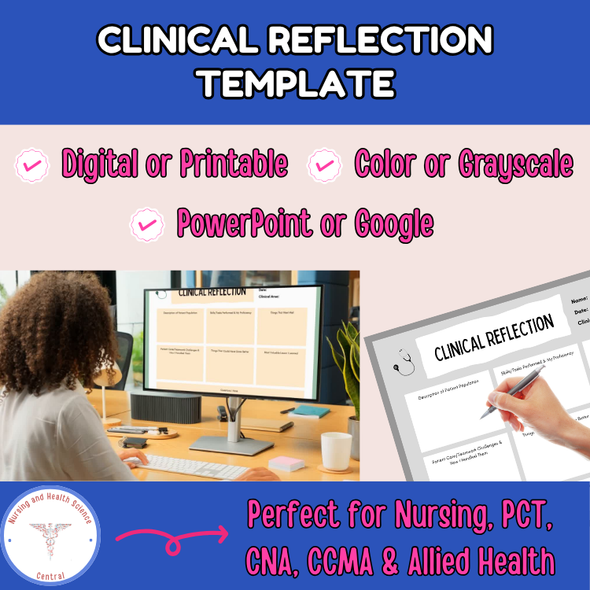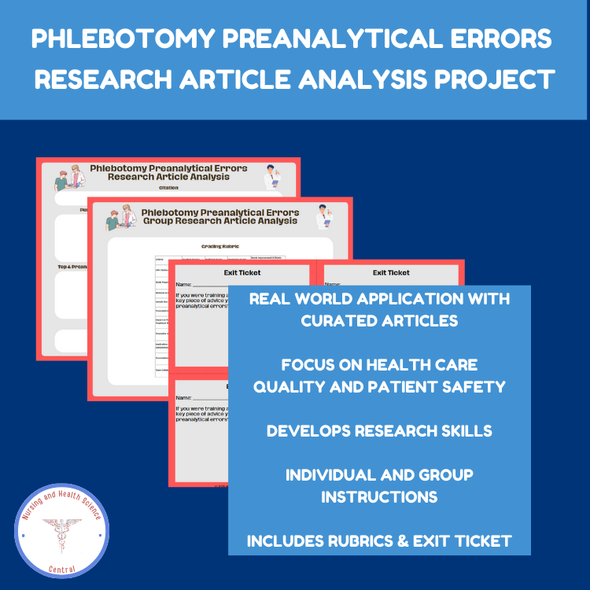Description
Check out the PREVIEW!
Enhance your nursing students' understanding of safe medication practices with this comprehensive "Medication Administration Scenarios Worksheet." Designed to reinforce the "10 Rights of Medication Administration," this resource presents realistic scenarios where students must identify errors and propose prevention strategies.
Key Features:
- Ten Detailed Scenarios: Each scenario depicts common medication administration errors, challenging students to apply critical thinking skills.
- Structured Analysis Sections: Dedicated spaces for students to note violated rights and suggest preventive measures, promoting active learning.
- Answer Key Included: Facilitates self-assessment and guides educators in discussions.
- Coloring Pages: Engaging coloring pages illustrating the "10 Rights of Medication Administration" to enhance retention and provide a creative learning experience.
Educational Benefits:
- Reinforces the importance of the "10 Rights" in clinical practice.
- Encourages critical thinking and problem-solving in real-world contexts.
- Prepares students for clinical rotations and enhances patient safety awareness.
- Provides a creative outlet to reinforce learning through coloring activities.
Usage Suggestions:
- Incorporate into nursing curricula during pharmacology or clinical skills sessions.
- Utilize for group discussions, simulations, or individual assessments.
- Use coloring pages as supplementary material to reinforce the "10 Rights" in a memorable way.
Included Scenarios:
- Right Patient: Administering medication to the wrong patient due to failure in verifying identity.
- Right Medication: Dispensing a drug with a similar name to the prescribed one, leading to potential adverse effects.
- Right Dose: Miscalculating the required dosage, especially in pediatric or geriatric patients.
- Right Route: Delivering medication via an incorrect route, such as intravenous instead of oral.
- Right Time: Administering medication at incorrect intervals, affecting therapeutic efficacy.
- Right Documentation: Failing to record administered medications, leading to potential overdoses.
- Right Reason: Providing medication without a valid clinical indication.
- Right Response: Not monitoring the patient's reaction post-administration, missing signs of adverse effects.
- Right Education: Neglecting to inform the patient about the medication's purpose and potential side effects.
- Right to Refuse: Overlooking a patient's expressed desire to decline a medication.
Equip your students with the tools they need to ensure safe medication administration and improve patient outcomes with this targeted worksheet, now enhanced with engaging coloring pages to reinforce learning.
Follow SCRUB SQUAD for more engaging lessons!
















